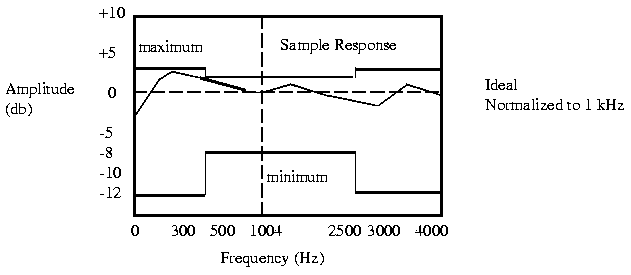| Introduction to Data Communications | ||
|---|---|---|
|
|
25. Telephone Line Characteristics | Next |

To measure Attenuation Distortion, the phone line has a test frequency transmitted from 0 - 4 kHz into the line at a standard amplitude of 0 db. The loss of signal or attenuation is measured at the receiving end and compared to a standard reference frequency: 1004 Hz.
db is short for decibel which is a relative unit of measure (similar to a unit like a dozen). It is a log unit and a +3 db gain will indicate an amplitude of 2x the reference. It is a logarithmic ratio between input voltage and output voltage. It is calculated by the following formula:
The resulting information is graphed on an Attenuation vs. Frequency chart. Attenuation is a loss of signal amplitude - the receive signal is a smaller amplitude than the transmitted signal. It is indicated by a positive db. It is also possible to have a signal appear at the receiving end with a larger amplitude than when it started - this is indicated by negative db.
| Introduction to Data Communications | ||
|---|---|---|
|
|
Table of Contents | Next |